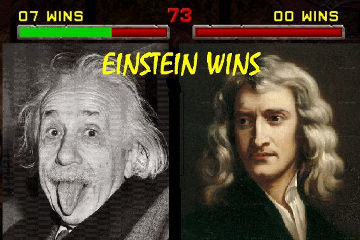What I’ve Learned:
“Orbital decay: Life’s a drag, and then you burn. Or worse.”
Gravity is scary. Like, horror movie monster scary.
Think about it; gravity is relentless. Just when you think you’ve lost it, there’s gravity behind you, shaking its chainsaw or hockey mask or Lee Press-On fingerblades at you. And it’s sneaky; even if you make it to the abandoned cabin where the lights don’t work and the caretaker killed a busload of nuns exactly fifty years ago tonight, gravity will be inside, lurking in the shadows. You can hide under the covers, but gravity is already under the bed.
Face it — you’ll never escape gravity. If it weren’t the earth yanking you down, it’d be the sun or Jupiter or a rogue black hole. The pull is inevitable, like iron toward a magnet. Or Paula Deen toward butter.
But you can reach a truce with gravity — temporarily. With just the right velocity, your momentum will exactly counteract the force of gravity toward, say, the planet below. You don’t fly away, and gravity doesn’t splat you onto Earth; instead, you achieve a “stable orbit” and circle around and around.
But like Jenga towers and Facebook relationships, things aren’t really as “stable” as they seem. The truce falls apart over time, leading to something called orbital decay. Gravity wins, and the orbiter takes a nose-dive toward the orbitee.
When orbital decay happens to artificial satellites — like space station Mir or the Hubble telescope — one of two things comes next: some space scientist will push the satellite further up to counteract gravity, or it will plummet toward Earth, incinerating (we hope) in the atmosphere on the way down.
Other bodies experience orbital decay, too. Moons, for instance, can get sucked into their planets and destroyed; no Death Star laser beam required. Stars collide, and really wish they hadn’t. Even galaxies and black holes, circling for millions of years, can eventually experience orbital decay and smush each other stupid.
So what causes orbital decay? And why can’t we have nice things, cosmically speaking?
A few reasons. The balance between “orbiting” and “plunging toward destruction” is precarious; the slightest nudge can throw it off. Near a planet like Earth, tiny molecules of gas making up the sorry excuse for a high-altitude atmosphere will do it.
Satellites plow through these specks of gas, no problem — but they do get slowed down, infinitesimally. Those orbital brake-taps add up, and eventually cause a slight drop in altitude — down to where the atmosphere’s thicker, which leads to more slowing, and further dropping, and so on. It’s a vicious spiral, ending with a satellite faceplant from ten thousand miles high.
But there’s more than one way to decay an orbit. A lumpy orbitee, for instance — if the mass of a planet or star isn’t distributed consistently, orbiting bodies will get whanged around by the irregularities until they finally cut loose. And if the orbiter is large enough, it can bring this fate on itself by creating tidal forces on the larger body that squeeze it out of shape.
(This is why most satellites take spin classes, just to stay trim.)
Really huge orbiters have another problem: gravitational radiation. When supermassive objects like neutron stars orbit each other, Einstein’s general relativity theory predicts that gravitational energy waves streaming away from them should cause orbital decay over time. In recent years, astronomers have found binary stellar systems that appear to behave just the way predicted by the theory, which some didn’t expect. Even dead for sixty years, Einstein’s still smarter than a lot of physicists. But even he couldn’t escape gravity.
And neither can you; even if you negotiate with it, gravity has friends who will sneak up and kneecap you, just so gravity can finish you off. It’s like Freddy Krueger, backed by gremlins. Or Chucky with a nest of facehugging aliens. Or Jason Voorhees with a horde of zombie henchmen. And that’ll put the “decay” in your “orbital decay”, let me tell you.





